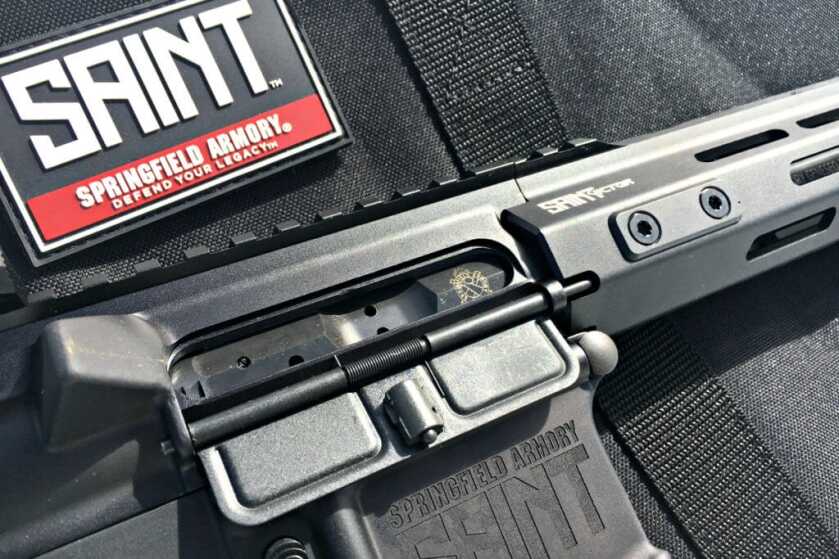
While there are a lot of 5.56 AR rifles out there, Springfield Armory has done a good job of bringing a rifle to market that stands out. They have done this with their line of Saint Victor Rifles.
I’ve had the opportunity to spend time with both the 16” 5.56 rifle as well as the 7.5” 5.56 pistol. Running them hard on the range at both a carbine course as well as numerous outings, working through unconventional positions, shooting groups for accuracy, and making my way through stress shoots. Bottom line, I’ve been pretty impressed.
To back up though, let’s look at where this rifle came from. Awhile back, Springfield Armory introduced the Saint line of rifles. They are good practical rifles, to be honest, they are kind of vanilla. They come with a 2 part handguard that isn’t free-floated, an A2 birdcage flash hider, etc…
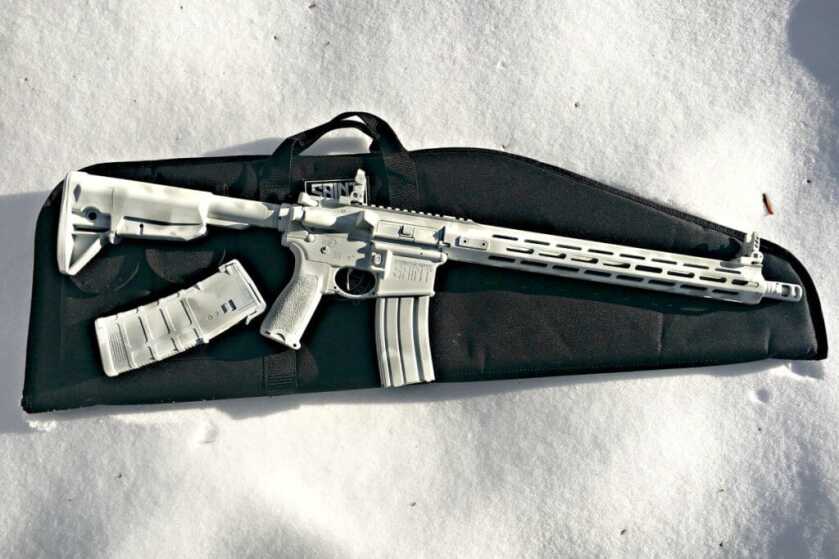
Fast forward to the Saint Victor. In this line of rifles, you find some really great features that come standard from the word go. Such as a full length 15” MLOK free-floated handguard over a pinned low profile gas block. Or the nice clean Nickel Boron Coated Single Stage Flat Faced Trigger. Lots of great additions come in the Victor line. We’ll run through the rifle starting with the stock and making our way forward.
The Saint Victor, similar to the original Saint, uses some BCM (Bravo Company Manufacturing) Gunfighter hardware, to include the stock, grip and trigger guard. Personally, I really like this choice. All of those components are no-nonsense, solid parts. The 6 position stock is easy to adjust and doesn’t have any slop or movement once you’ve adjusted it. And the grip I find fills out in my hand, giving me a solid purchase without any annoying finger grooves. And lastly, the BCM trigger guard, while often overlooked, keeps the top of your middle finger from getting torn up while working manipulations on the range. All around a solid set up with respect to furniture.
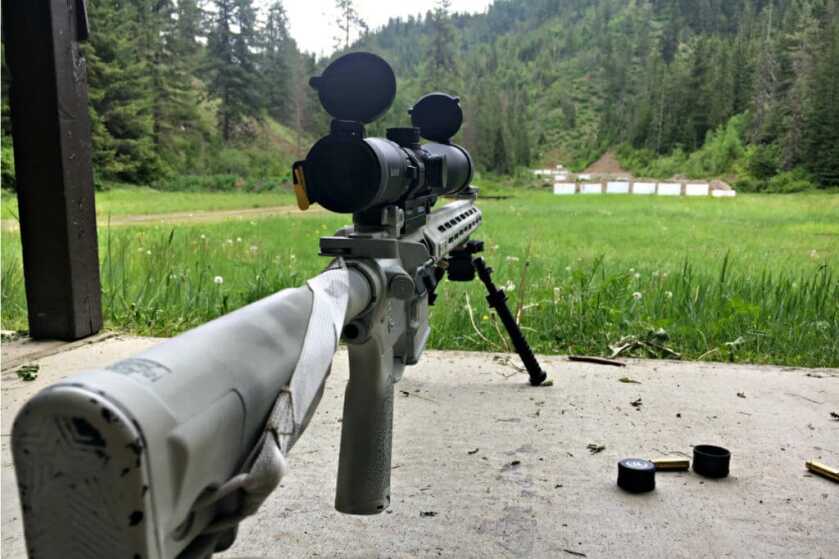
Also, housed in the buffer tube is a Carbine “H” Heavy Tungsten Buffer. In this rifle I’ve been shooting, this does a great job coupled with this guns gas port. Often factory rifles are over gassed and throw brass way out in front of you. Between the gas port and buffer selection, this rifle shipped with, I’ve found it pleasant to shoot, with pretty consistent ejection across a wide range of ammunition.
Moving forward we have an upper and lower receiver made of 7075 aluminum forgings. Both are Type III Hard Coat Anodized a clean black. Additionally, Springfield Armory uses the Accu-Tight Tension System. What this allows is a set screw adjustment from the bottom which removes any play between the upper and lower receiver. Giving you the effect of a matched receiver set.
The receiver end plate is properly staked (sometimes overlooked in the industry) and also has a built-in QD socket. This gives the user the option of running a single point sling if they chose to do so. Or just a secondary sling point in addition to the two built into the BCM Stock.
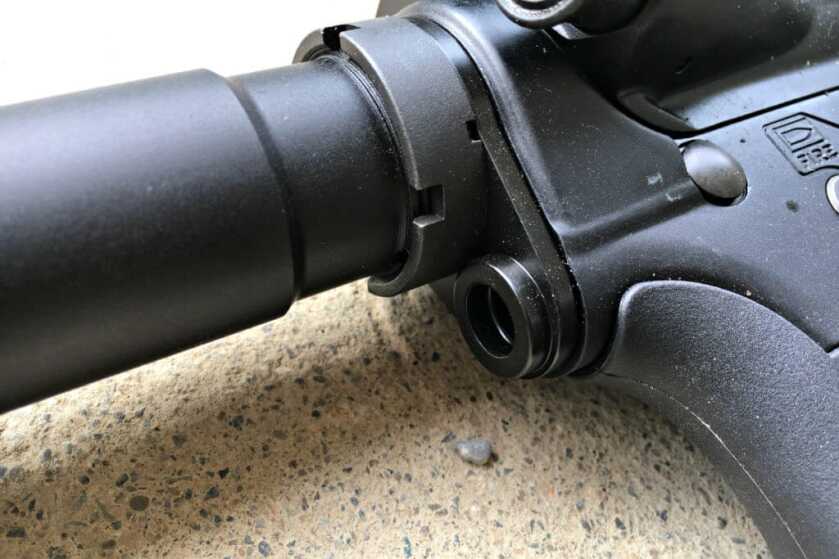
Internally, the Saint Victor has some solid guts. It uses a proven M16 Bolt Carrier group which has been HPT/MPI inspected, with the addition of a Melonite Coating for added durability.
Next up we have the trigger. The Victor series of rifles use a Flat-Faced Nickel Boron Coated Single Stage Trigger. While there is a lot of personal preference out there with respect to flat-faced or curved triggers, or single or two-stage triggers, I’ll say the trigger on the Saint Victor is pretty solid. It is hands-down better than the “Mil-Spec” 2 stage triggers most rifles ship with.
Moving out to the handguard, Springfield Armory did a solid job. Not only did they ship a free-floated MLOK handguard compatible with most accessories on the market today, but they also did something nice…they got rid of the top rail. While you can absolutely make an argument for a full-length top rail, I like it slick. They left a section at the very front towards the muzzle, giving you room for the front BUIS (Back-Up Iron Sights), and a small section on the receiver side in case you mount your optic forward. This to me is perfect for most shooting. You remove weight and the potential snag hazard of a long section of exposed Picatinny rail.
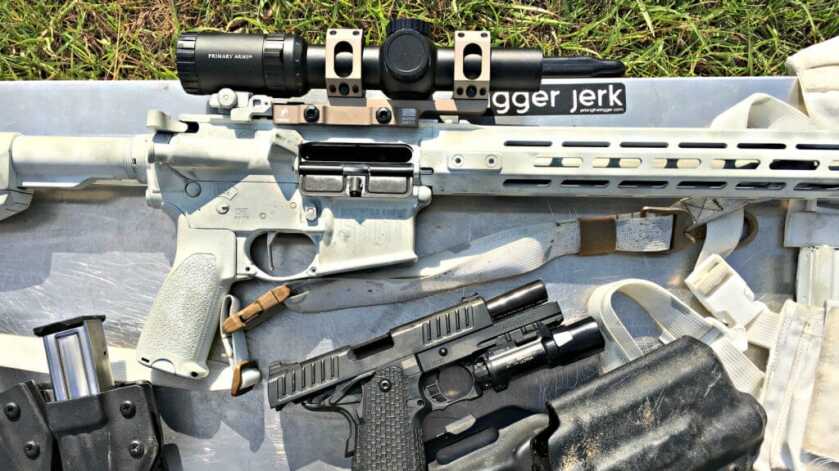
I will say, yes, if you are running night vision, the provision for mounting a laser is lost without having that full top rail. But if you have over 5k in NODs (Night Observation Device) and IR lasers, you can probably swap the handguard out with something mission-specific for yourself at that point.
Something else I do like about the handguard is the fact it is a full 15”. This gives you all the space you need with respect to reaching out onto the handguard. Also if you are shooting off of a barricade, it alleviates the potential issue of making contact with the barrel and in so doing throwing your rounds off target.
On top of the receiver and handguard, the Victor comes with spring-loaded flip-up BUIS. I find they do a good job and hold zero. To deploy them, you press the button on the left side and they flip into place. You must then depress the button to stow them. The rear aperture offers both a large and small peep sight.
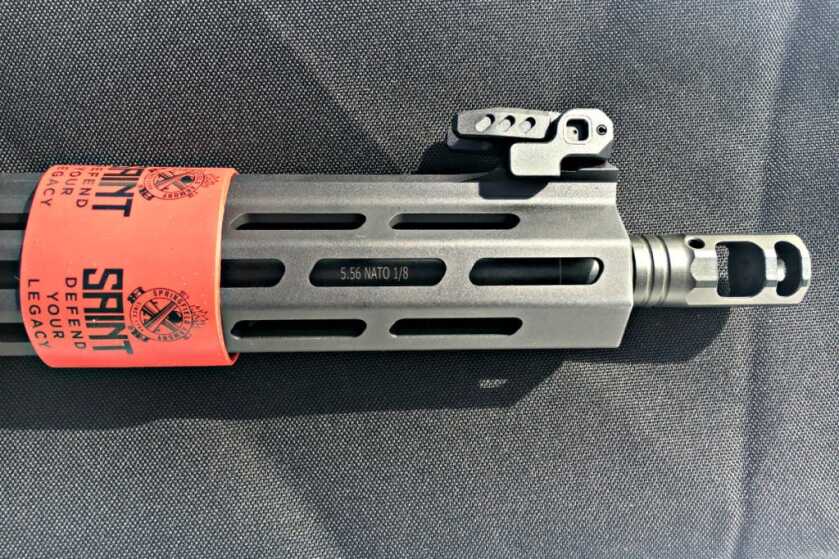
For a barrel, the Victor Rifle uses a 16” CMV 1:8 twist barrel with Melonite coating. For most applications, I think the 1:8 twist is a good choice. Letting you run a large variety of lighter as well as heavier bullet weights. The chamber is also specced for 5.56×45 NATO, taking into account higher pressures than .223 Remington.
And lastly, at the end of the barrel is a very effective 2 port muzzle brake. While not the most pleasant to be standing next to, it does a great job keeping the rifle shooting flat. Allowing for fast splits and follow up shots.
Pretty much the only thing left relatively standard on the Victor rifles is the standard GI Style Charging Handle and the 90-degree safety selector. Most everything else has been upgraded in some way.
So how did these guns work out for me? They did great.

I topped the 16” Victor Rifle with a Primary Arms 1-6 Optic using the ACSS Reticle. Once zeroed, I could consistently put rounds where I needed them out to 500 yards, as long as I did my part. In that configuration, with the addition of an Edward Sherman Design Sling, I ran a Defensive Carbine 1 Course with Life + Liberty Concepts.
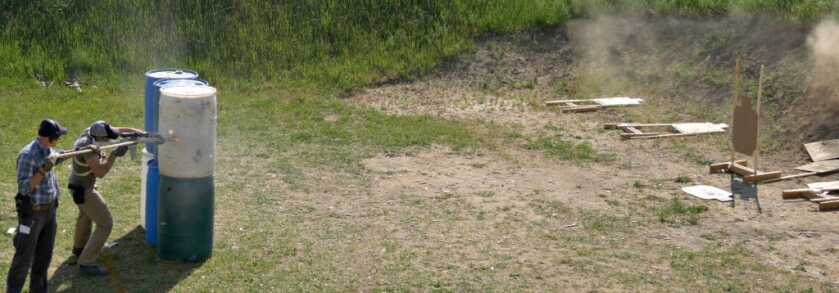
Through the course, we did a lot of relatively close shooting and a lot of manipulation. The Victor handled well and didn’t skip a beat. The smooth recoil impulse, from the synergy between the gas port/buffer and muzzle brake, allowed for quick splits. I found the single-stage trigger to do a great job as well. The gun, while full size, was still easy to manipulate and move around barricades.
With respect to the accuracy, here is what I got with the 16” Victor, shooting off of an Atlas Bipod and using a 4-16 Bushnell Nitro optic. All 5 shot groups shot at 100 yards.
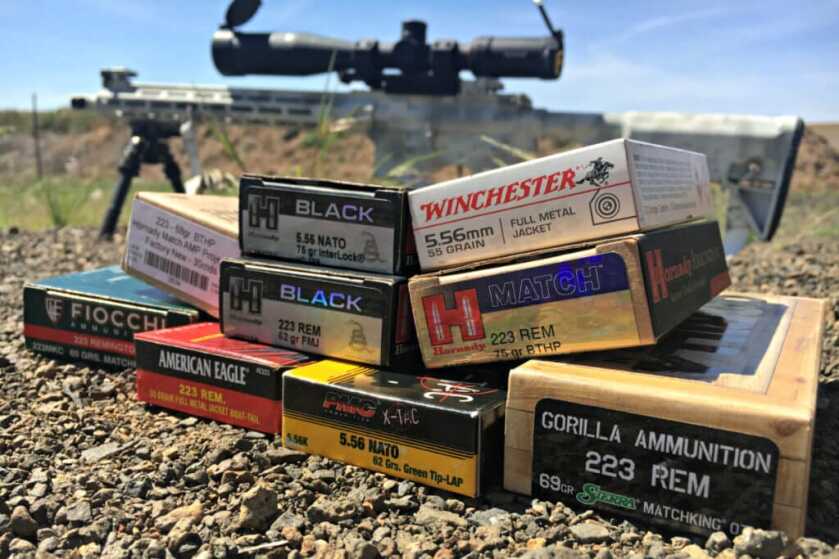
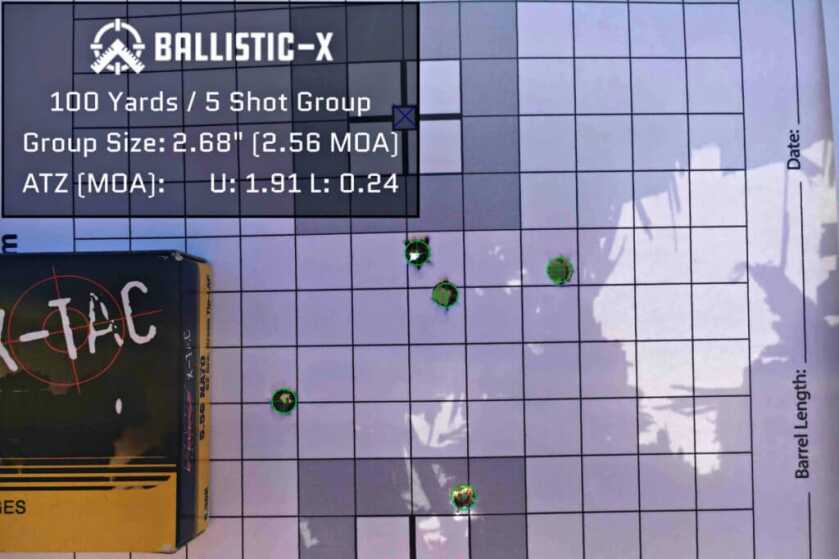

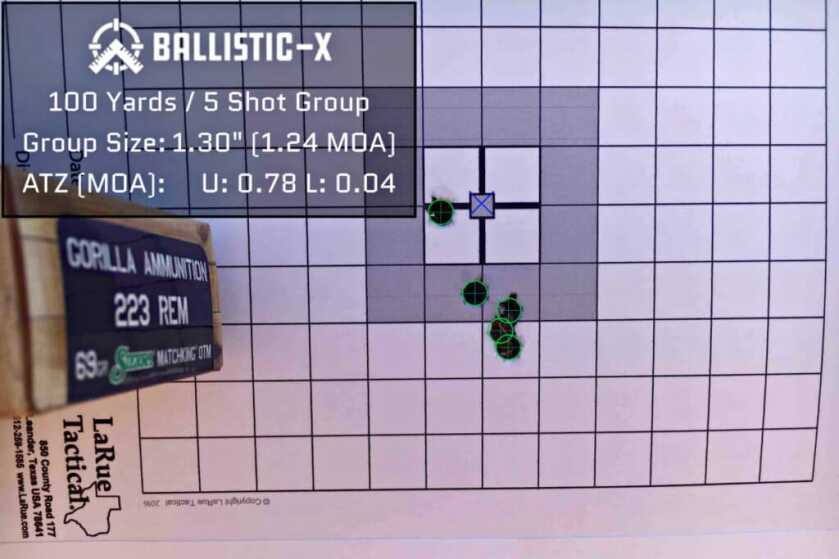

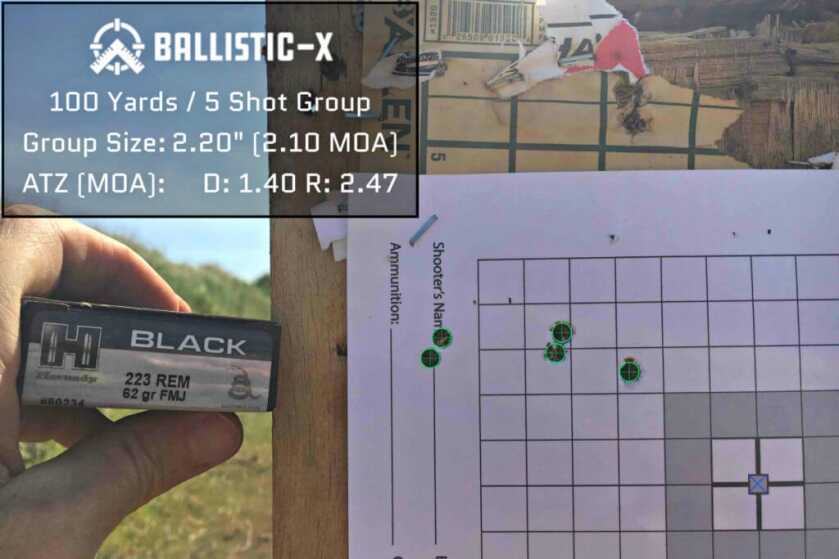

Big picture, the rifle is more accurate than I am. Between all those different loads, I’m pretty impressed with the gun out of the box. Excluding a flyer here or there, it would easily print a 5 shot group under 1 MOA, depending on the ammo selected and the shooter doing their part.
I also spent some time with the Victor Pistol. The pistol shares almost all the same features of the rifle except a few important ones. Such as the barrel and muzzle device. *For my shooting of the Pistol, I topped it with a set of Magpul MBUS sights*

The Victor 5.56 Pistol uses a 7.5” 416R Stainless Steel barrel with a 1:7 twist. This faster twist rate allows for the stabilization (accuracy) of heavier bullets. Since most short guns, pistols, and SBRs, are used at closer ranges with heavy barrier blind projectiles, this is a nice touch.
One of the things that impressed me most about the pistol was the muzzle device. Usually, when firing sub 11” 5.56 the concussion and subsequent fireball are painful to deal with. The linear compensator used by Springfield Armory does a great job of taming most of the fire and moving all that concussive force forward and away from the shooter.

And lastly being a pistol, Springfield Armory uses an SB Tactical SBX-K stabilizing brace. Personally, it isn’t my favorite when compared to the SBA3 or SBA4 braces, which allow for adjustment, but I will say it functions fine and is quite comfortable.
If you are in the market for a turnkey 5.56 rifle or pistol, I’d give a hard look at the Springfield Armory Saint Victor series. They offer a lot of value for at a pretty competitive price. You end up with a capable firearm that has a lot of features you would otherwise have to spend more money upgrading to. While MSRP lists the 5.56 Rifle and Pistol at $1073 and $1015 respectively, with a little searching, you can find them for around $850.

*How To Paint Your Rifle Winter/Snow Camouflage*

It would have been good to show the accuracy/velocity comparisons of the rifle and oistol!
I waited until I was able to purchase the Springfield Armory Saint Edge, and now there is the Saint Victor. There are really subtle changes, as far as I can see between the Saint, Saint Free-floating handguard, Saint Edge, and now the Saint Victor rifles. I have yet seen or read a review that really explains the difference(s) between the Saint Edge and the Saint Victor, but I have seen comparisons only between the Saint free-floating handguard version and the Victor. Is the Victor just a new name for the Saint Edge?
I own one.
Solid rifle I run the Romeo 5 red. With a vortex magnifier on it.
I find this rifle the exceptionally fine. Highly reliable and great right out of the box.
Very good article. A few more photos on the proper hold for the Victor pistol would have been nice, but overall…a good read!